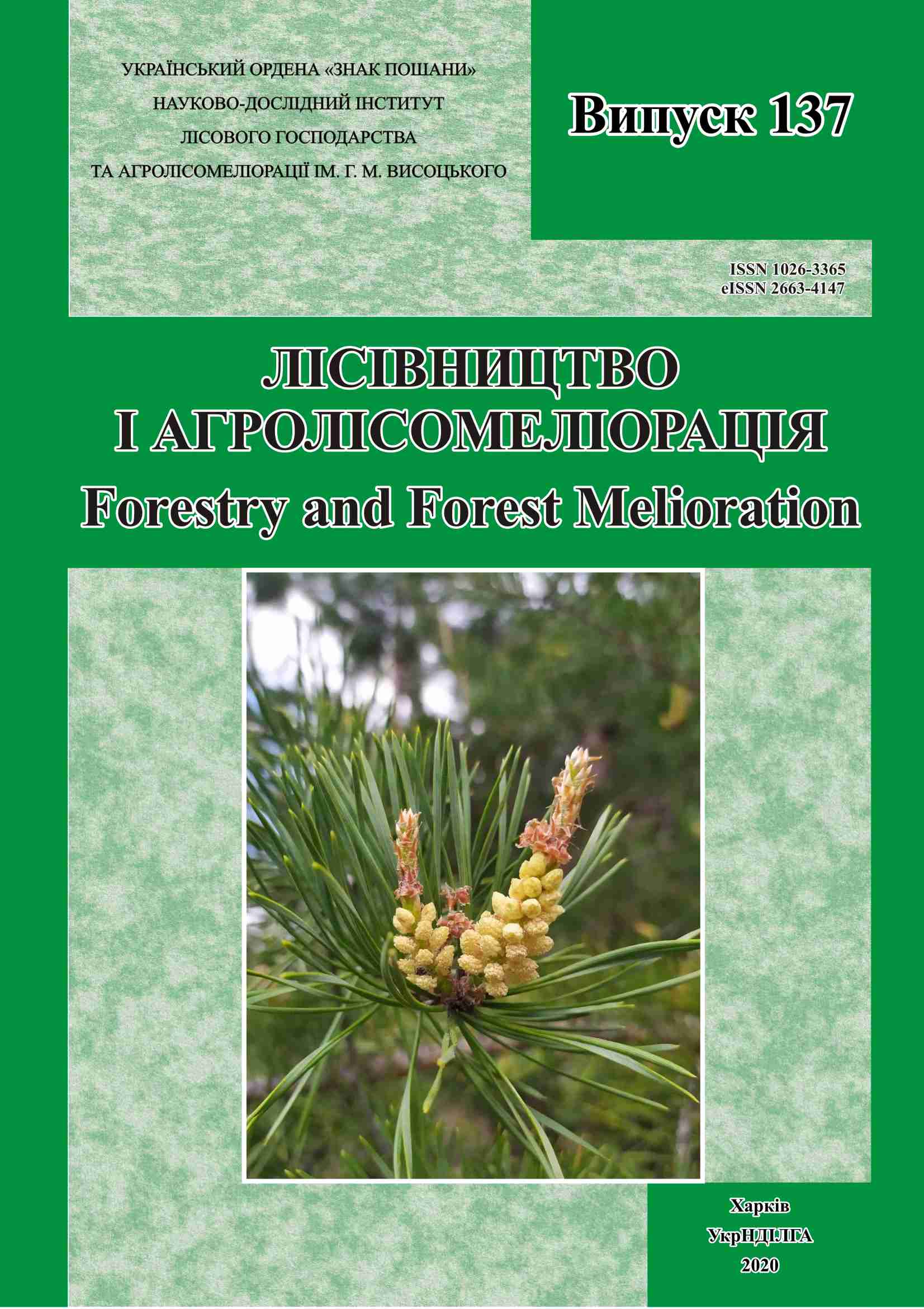Abstract
Introduction
Although meteorological conditions are the main factor determining the fire hazard and the regulations of the forest fire services, numerous studies in many countries show that additional factors also greatly influence the fire risk (anthropogenic impact, arsons, etc.) (Gorshenin 1981, Glagolev & Kogan 2011, Balabukh 2016).
The situation with forest fires in Ukraine remains quite complicated. Quite often, due to a constant burning of dry last year’s grass in the spring, fires are recorded even under the weather conditions least favourable for fire occurrence, that is, the minimum of the fire hazard class by weather conditions. At the same time, fire cases are often recorded in deciduous forests which are known to be the least fire hazardous (Shcheglova 2013). Investigation of tendencies for the occurrence of such fires can help preventing fires.
Materials and Methods
Based on the connection between the tendencies of fire occurrence in certain territories of the Zhovtneve State Forest Enterprise and Kharkiv Forest Research Station with a comprehensive indicator of fire danger by weather conditions (CIFD), it has been established that fires in deciduous forests have their own seasonal specificities.
To assess the fire hazard, a CIFD by Nesterov (Nesterov 1945) was calculated with certain clarifications (Borsuk 2013). The scale and frequency of fire occurrence in deciduous forests in these enterprises were established at certain values of CIFD and fire hazard class in various months and seasons.
Forest fires were assessed according to the scale proposed by the Soyuzdiprolisgospom with adjustments by the fire number (Nesterov 1949).
Results
Although deciduous stands constitute the main part of the forests in both enterprises, in fact, about 90% of the total number and area of fires were recorded for pine forests according to the data on the distribution of cases and area of fires by species and forest conditions for the 2005–2018.
The largest proportion of fires and their area among deciduous species occurs in forests, where the main species is English oak (Quercus robur L.). For other species, the number of fires does not exceed five cases for the entire study period.
The distribution of the average number of forest fires by months and decades of months, showed that the periods of the fire maximum (when the number of fires exceeded their average monthly number) and the fire peak (the period with the maximum number of fires) falls on the period from April to September. The fire peak in deciduous forests was noted already in April, that is, at the beginning of the fire hazard period (27.0%).
Trends in the area of fires show the highest rates in late summer (August – 26.9%) and early autumn (September – 21.7%).
The data on the number of cases revealed that in less fire hazardous spring months, the threat of fires in deciduous forests is quite high, even with minimal CIFD values and 1st fire hazard class. Therefore, patrolling in such forests must be carried out at the beginning of the fire hazard period.
In summer, with a better developed grass cover, fires were recorded from 2nd to 5th fire hazard class, and with almost the same indicator of the number of fires on average per day (from 0.03 to 0.05). Autumn fires do not occur so often, with the overwhelming majority for 5th fire hazard class (indicator 0.07).
The assessment of the fire occurrence in deciduous forests in the studied enterprises according to the Soyuzdiproleskhoz scale by the fire frequency (the number of cases per 1 million hectares) showed that in the Zhovtneve State Forest Enterprise, the relative fire rate is high, and in Kharkiv Forest Research Station it is average. The relative fire rate by the average area of one fire per 1,000 hectares of the total area of the object is low in both enterprises.
Conclusions
In both studied enterprises, forest fires most often occur in coniferous stands (more than 90%), but deciduous forests also account for 9.9% in number and 20.9% in area in the Kharkiv Forest Research Station and 7.2% of cases and 13.1% of the area in the Zhovtneve State Enterprise. The vast majority of fires in deciduous forests occur in oak stands (more than 80%).
Forest fires in deciduous forests of the studied enterprises occur not only when the fire hazard class is raised during highly fire hazardous periods, but also at the minimum comprehensive indicator of fire danger. This peculiarity is observed in the spring, when there are a lot of cases of deliberate burning of last year’s dry grass.
In connection with the established seasonality of forest fires in deciduous forests, when assessing the fire hazard by weather conditions, it is necessary to take into account the peculiarities of fires at different times of the year.
4 Figs., 4 Tables, 26 Refs.
Key words: forest fire, burning, fire season, forest fire danger index.

This work is licensed under a Creative Commons Attribution 4.0 International License.
